Sixteen Years
 Background: The Gesell Institute of Child Development has observed that children and teenagers go through a repeating sequence of six different stages with predictable changes in mood and behaviour in each. Sixteen Years includes just one such stage. The behaviour observed in these stages reflects the qualities associated in tradition with the planets—in the case of Sixteen with Moon.The developmental traits in these profiles represent only one aspect of children’s behaviour and may be masked, modified or intensified by other factors, both individual and environmental, such as temperament, gender related behaviours, high stress levels, over-stimulation, too much screen time or organic problems.
Background: The Gesell Institute of Child Development has observed that children and teenagers go through a repeating sequence of six different stages with predictable changes in mood and behaviour in each. Sixteen Years includes just one such stage. The behaviour observed in these stages reflects the qualities associated in tradition with the planets—in the case of Sixteen with Moon.The developmental traits in these profiles represent only one aspect of children’s behaviour and may be masked, modified or intensified by other factors, both individual and environmental, such as temperament, gender related behaviours, high stress levels, over-stimulation, too much screen time or organic problems.
Note: If your young person has just turned this age but shows none of these behaviours, please read the previous age level, or just wait a few months, then read this again!
These profiles integrate the wonderful descriptions from the Gesell Institute of Child Development research and the ideas of Rudolf Steiner into my own research. Direct quotations from Gesell are in ‘single quote marks’ or indented.
View/download pdf Sixteen
Sixteen
A stage with Moon qualities
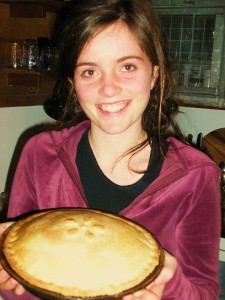 Sixteen brings with it all the beautiful Moon qualities we enjoyed in our children at Two, Five and Ten. We again see their more sociable, amenable and non-confrontational nature, which is motivated by the importance of love and relationships to them. They may be a little more naïve in their relationships, more accepting of others, not delving too deep, not always revealing everything about themselves. Their challenge once again is being able to remain strong in themselves but they now have more maturity to help with this. Home is a happier and more acceptable place to be again.
Sixteen brings with it all the beautiful Moon qualities we enjoyed in our children at Two, Five and Ten. We again see their more sociable, amenable and non-confrontational nature, which is motivated by the importance of love and relationships to them. They may be a little more naïve in their relationships, more accepting of others, not delving too deep, not always revealing everything about themselves. Their challenge once again is being able to remain strong in themselves but they now have more maturity to help with this. Home is a happier and more acceptable place to be again.
Sixteen years comes after the completion of five full cycles of the six Gesell stages. It reveals a new maturity after the more turbulent times of the previous cycle. The Gesell descriptions quoted in this profile come from the book Youth The Years from Ten to Sixteen, by Arnold Gesell, Frances Ilg, and Louise Bates Ames, published in 1956. Unlike the profiles on younger children, the profiles on Fifteen and Sixteen have not been updated by the Gesell Institute of Child Development. Yet these profiles still illustrate the basic nature of Sixteen year olds today, though their environment is very different. Growth is complex in adolescence and there is now a huge amount of information available on all aspects of development, on the risks to teenagers today and advice on how to help them. This profile aims to describe the behaviours of healthy Sixteens, which the Gesell research identified and reflect Moon qualities.
Physical growth
During this year of Sixteen the emphasis in physical growth will start to move from the head and nerve sense system down into the chest, heart and lungs. The previous two years brought further maturing of the nervous and sensory systems as well as the growth resulting from the hormonal changes of adolescence. With this came a stronger sense of individuality, new ways of thinking, and a search for ideals and truth. Now as growth in the chest gradually begins to predominate, we see the completion of breast development in girls over the next two years (although breasts can still change size with weight changes and pregnancy.) The consolidation of the growth of the respiratory and circulation systems is reflected in the interest that sixteen year old males show in their lung capacity (Gesell)—psychological interest follows physical growth once more. Peak levels of testosterone continue to drive the physical growth in male Sixteens.
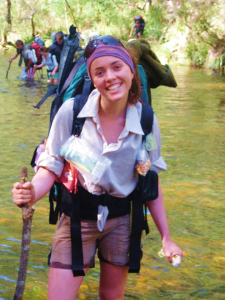 Physically also, as might be expected once more in a Moon stage, many Sixteens ‘report wonderful or excellent health’. They now seem more robust, with more energy. Gesell notes that the ‘tight tenseness of Fifteen evaporates at Sixteen.’ Often their complexion difficulties improve. Their appetites have improved but are not extreme, except in some boys. Gesell observations noted that Sixteens slept well: Sixteen is ‘apt to daydream a bit before he goes off to sleep’. ‘Sleep is untroubled’ ‘Many find dreaming “a pleasure” or” very agreeable”.
Physically also, as might be expected once more in a Moon stage, many Sixteens ‘report wonderful or excellent health’. They now seem more robust, with more energy. Gesell notes that the ‘tight tenseness of Fifteen evaporates at Sixteen.’ Often their complexion difficulties improve. Their appetites have improved but are not extreme, except in some boys. Gesell observations noted that Sixteens slept well: Sixteen is ‘apt to daydream a bit before he goes off to sleep’. ‘Sleep is untroubled’ ‘Many find dreaming “a pleasure” or” very agreeable”.
While good sleep may be a characteristic of a healthy Sixteen, many Sixteens today, like the rest of the population, may be sleep deprived. The use of new technologies and increases in screen time may also be affecting quality of sleep. As mentioned in the Fourteens profile, new research on sleep is showing that adolescents need as much sleep as younger children but few are getting it and many try to make up for sleep lack with long sleep-ins on weekends. Their sleep-lack only worsens with increases in homework and academic pressure in the last couple of years of high school. Increased socialising as they get older also adds to the likelihood of more frequent late, and very late, nights.
Sleep researchers recommend that teenagers should get from 8.5 to 10 hours per night, have a regular sleep routine, as well as avoid stimulation and long bouts of screen time before bed (screen time appears to lower melatonin levels which affect sleep.) Mobile/cell phones have multiplied the opportunities for social communications that can also compromise sleep time (as in texting through the night). Agreements may have to be put in place to protect healthy sleep routines! Sleep lack will, of course, compromise health, alertness and learning in children, young people and adults.
Brain growth and physical growth, driven by hormonal changes, continue through this year and, although adult height is usually reached by 18 to 20 years, brain growth, filling out and more subtle maturation processes can continue well into the twenties even up to 30.
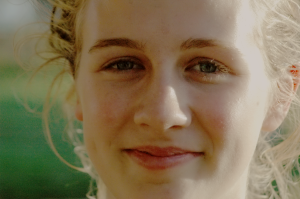
Sense of self
Gesell researchers suggest that a cardinal trait of Sixteens is their ‘self- assurance’. Maturity is bringing more ‘self-reliance’, ‘deeper self-contained-ness’ and has given Sixteen a ‘more self-possessed mind, which is more ordered and under more control’. Sixteens now have, not just a need for independence, as Fifteens have, but a sense of independence. Perhaps this makes them more secure and confident. At fifteen they may have resisted, at sixteen they hope the parents will allow them to go their own way. “Don’t worry about me!’ they say. This more self- possessed sense of independence, Gesell suggests, will ‘normally protect them from excessive identification with anti-social groups and gangs’. ‘They are more resistant to totalitarian and mob influence’! What a relief for the adults who love them. Those with low self-esteem, however, are as always, more vulnerable.
At Sixteen, with this self-assurance, their sense of individuality is stronger. At about sixteen and a half too comes another awakening to the nature of “self”. The first strong experience of “separateness of self” came at Two and a half when the child experienced physical separateness. At Nine and a half came an experience of feeling what could be described as a soul separateness’, in inward separateness from others on the level of feelings, thinking and intentions. At sixteen and a half a new more distinct feeling of separateness at an even higher level of self-identification occurs— this time there is a new searching for the individual spirit of oneself, adding another dimension to the adolescent’s search for identity and self. This new search sometimes manifests in unexpected interests in spiritual aspects of life, in life after death or in reincarnation. In a Steiner Waldorf School curriculum, this search is met by the study of the story of ‘Parsifal’, an archetypal picture of the human search for self. Gesell noted that Sixteen ‘believes in a realm for afterlife [more] than at fifteen.’ Some ‘are finding their way into their own religious reality.’ Today, over fifty years later, fewer families are part of traditional formal religions, and even the word “religious” brings negative reactions in some, but vague searching for spirit can still go on. We may need to find new ways to support this search in Sixteens: in finding their own individuality, meaning in their life and sense of their place in the world, but also all these things in relation to a greater reality.
One of the challenges for Sixteens, is also a challenge to the Moon type: that despite their self-assurance they may not feel free to be themselves, that they hide who they are to please others. Gesell describes this: ‘Though Sixteen appears insensitive to the remarks of others, it is because he hides his feelings, he becomes quiet or “shuts up kind of quick”.’ ‘This trend to cover up hurt feelings is also true of other emotions. He may not wish to expose himself (“Don’t want people to think I’m too touchy”) and he also doesn’t want to bother people with the way he feels. But when he is with a good friend, that is different.’
Generally a healthy Sixteen does not go too far into hiding the real self, but one does need to watch that they can hold their own when they need to, and not give in to wanting to be the same as, or to please, another. In general however, Sixteens inclinations are more individual and certainly less influenced by parents than previously. They tend more to conservatism than outrageousness. Gesell noted that once again they are ‘proud to wear hand-me downs’ as Tens were, but in their own styles and on their own terms. Of course, if Sixteens are rebellious, they may gravitate towards the norms of their peers, which can be more extreme in dress.
Thinking and ethics
Sixteens are by necessity more oriented to the future in relationships, study and work possibilities, but their more natural tendency would be to live in the present, for they like to live well and fully, right where they are. They are content with what is going on around them, and tend to respond intuitively rather than with deep consciousness which gives the impression of a certain naïvety in their approach to the world. Their understanding of the world is more in relation to themselves rather than more abstract, greater principles. The Gesell descriptions illustrate this more open, innocent approach: Sixteens’ ‘ethical sense is more flexible and more stable.’ He ‘seems a little surprised to realize that his ideas are about like his parents’.’ To him it is ‘still important to determine what is right or wrong by what he thinks, by how it would relate to him personally. He recognises that there are codes and principles laid down by his parents and church, but what is important to him is how he “follows these from there”.’ Sixteen is ‘pretty general about the truth and is undoubtedly quite truthful. In fact, he might be at times a little too truthful, a little too frank and open.’ He ‘doesn’t seem very inhibited or overly sensitive in what he says.’
Emotional development
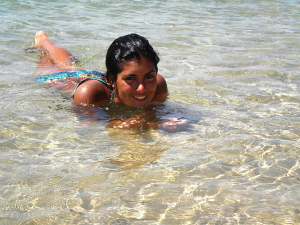 Sixteens have all the qualities of Moon—love of people and sociability, friendliness, diplomacy, wit. As we have seen, on an emotional level, in optimal environments, Sixteens have their emotions pretty well under control; they are generally on a more even keel; they are not as touchy; they cover up hurt feelings; they are not given to worries and do not indulge unduly in moods; they seldom cry because they say ’crying doesn’t make them feel any better’. They usually curb their anger or circumvent it by walking away or indirectly laughing it off. This may be a big change from Fifteen.
Sixteens have all the qualities of Moon—love of people and sociability, friendliness, diplomacy, wit. As we have seen, on an emotional level, in optimal environments, Sixteens have their emotions pretty well under control; they are generally on a more even keel; they are not as touchy; they cover up hurt feelings; they are not given to worries and do not indulge unduly in moods; they seldom cry because they say ’crying doesn’t make them feel any better’. They usually curb their anger or circumvent it by walking away or indirectly laughing it off. This may be a big change from Fifteen.
Sixteens like laughter and indulge in it abundantly, at favourable social gatherings. They are reported now as being cheerful, friendly, outgoing and well adjusted. Gesell descriptions add to this picture: Sixteen’s mother says that “he takes things in a matter-of-fact way”. They seem ‘more outgoing,’ and ‘broader in interest’. Their ‘happiness is very real but not exuberant’. They do not ‘go to extremes.’ ‘“Perfectly content” describes the pervasive quality of his happiness.’ ‘It is the enjoyment of his activities that distinguishes Sixteen.’ ‘He isn’t interested in spending his time and energy resisting and rebelling the way he did at fifteen.’ Such resistance or confrontation, as we have seen, is not the Moon type’s way.
So in a healthy Sixteen one can see growing emotional intelligence. They are more mindful of others. They are more likely than at Fifteen to be able to see another’s point of view. They are better able to appraise the motives of others, both peers and elders. Their self-awareness, self-dependence and personal social adjustments all add to this picture of maturing emotional development. Unfortunately the pressures and stresses on many teenagers, from study, from family and social situations and on a global awareness level, are increasing and these positive traits that healthy Sixteens show in more ideal situations can often be masked by stressed behaviours.
Relationships
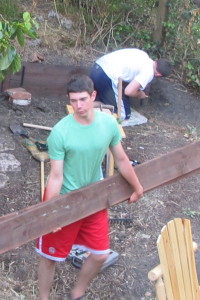 Sixteens are exchanging Fifteen’s and Saturn’s priority for freedom for Sixteen’s and Moon’s priority for love and relationship. Gesell illustrates this well. Sixteen ‘is coming to know that the secret of his own happiness is involved with others. He finds he is “thinking of the other fellow” is ‘more tolerant to the world’, and is ‘more willing to look at another person’s point of view’. He ‘appraises personal motives’ and has a ‘mindfulness of people which contributes to his poise and ability to get along with them.’ Socially he has an ‘ease and smoothness’ and ‘naturalness in his own self-expression’. He has ‘begun to recognise written and unwritten codes of conduct’.
Sixteens are exchanging Fifteen’s and Saturn’s priority for freedom for Sixteen’s and Moon’s priority for love and relationship. Gesell illustrates this well. Sixteen ‘is coming to know that the secret of his own happiness is involved with others. He finds he is “thinking of the other fellow” is ‘more tolerant to the world’, and is ‘more willing to look at another person’s point of view’. He ‘appraises personal motives’ and has a ‘mindfulness of people which contributes to his poise and ability to get along with them.’ Socially he has an ‘ease and smoothness’ and ‘naturalness in his own self-expression’. He has ‘begun to recognise written and unwritten codes of conduct’.
This priority for social interests is not always as easy for Sixteen as it might seem. Gesell says: ‘He has fewer fears, but still fears “new social situations”’. Sixteens ‘can be reluctant to move too far from home base and have to meet a lot of new people.’ Perhaps this has helped bring them home again, for family relationships usually improve at Sixteen. Arguments are fewer and there is more mutual understanding. Although broader socialising experiences are still preferred to family when they are short of time, and Sixteen is somewhat ‘remote from his family in a happy way,’ Sixteen is happy to be home based if he can also be independent. Sixteens like to have their need for privacy and independence respected and, when this is so, will still approach parents for advice. So with the right support, the trend is back into the home, with ‘a greater desire by the group to congregate there.’
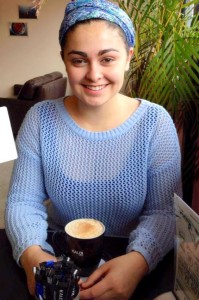 Sixteens like banter and laughter; teasing of siblings can be part of this. Parents may still need to remind them about family guidelines concerning the hurtfulness of ‘put downs’ and disrespectful comments. Teenagers are still very vulnerable and tender in their sense of identity and teasing remarks can cut deep. This a good time to make sure our children know how to communicate their affection for each other in more constructive ways than teasing— a method of communicating frequently used by adults when more direct communication of care becomes difficult. Sixteen does basically want social harmony not conflict!
Sixteens like banter and laughter; teasing of siblings can be part of this. Parents may still need to remind them about family guidelines concerning the hurtfulness of ‘put downs’ and disrespectful comments. Teenagers are still very vulnerable and tender in their sense of identity and teasing remarks can cut deep. This a good time to make sure our children know how to communicate their affection for each other in more constructive ways than teasing— a method of communicating frequently used by adults when more direct communication of care becomes difficult. Sixteen does basically want social harmony not conflict!
Outside of home, relationships also improve. Sixteens’ interest in people evokes positive attitudes and social responses, for they can show a cordiality in social situations, which was not seen at fifteen. They tend to take things as they come, and are better at school than they were in the last year.
Amongst peers, Sixteens build multiple friendships, with both boys and girls, and there is much companionship on a non-romantic basis. Mixed groups can be loosely organised for social activities without much worry about agenda or preliminary preparations. Friendships can be very intense and mutually confiding. The closeness they can feel in particular friendships can manifest in touching, but sometimes worrying, inter-dependency and commitment. One parent of a Sixteen reported how her daughter went together with her friend to have exactly the same design tattoo put on exactly the same place on their bodies and when the tattooist made a mistake in the design in one, it was matched in the design for the other.
Sex, drugs and responsible independence.
Advice given in the earlier profiles about the wise use of mobile phones and technology (fourteen), about sex, drugs and risk factors (Fourteen), about pornography (Fifteen) is still relevant here; young people still may need information and reminders about how to keep themselves and others safe and healthy. Statistics on Sixteens differ in many ways, from survey to survey, and significantly from country to country, but here are some examples; one survey suggested less than 15% of Sixteens had used drugs other than alcohol; over one third were drinking alcohol at least once a month, half of these to the point of being drunk; a third of Sixteens have had sexual intercourse at least once, with the majority having sex with someone they were in a relationship with and the majority having frequent sex using contraceptives. These figures seem to consistently put about 15% of Sixteens at possibly serious risk but this still leaves a lot of Sixteens who are not showing any of these high risk behaviours. It is reasonable then to trust most Sixteens to do what is sensible. You need to know they have the information they need to stay safe and healthy and accept that they may make mistakes. For it is far more helpful and respectful for parents to be able to talk about risky behaviours with Sixteens while still trusting them to be sensible. Trust helps to build trustworthiness, on your side and theirs. If your particular Sixteens are in the “at high risk 15%”, it would be wise to get help for them while they are still in your care.
 The way we go about supporting our teenagers in all areas has to change from how it was when they were younger. It has to be respectful of their independence and age. It has to be more ‘adult to adult’, albeit where one may be still standing on the threshold of becoming adult and the other adult is a mentor with more life experience. This is the beginning of the transition to living as adults together, with more freedoms but with more responsibilities, at home and in being part of the community. With many younger people staying longer at home, or coming back to live at home after an absence, new ways of respectful living together as adults need to be established, free from old, unhelpful patterns of parent-child interactions. It is about changing the framework of family relationships.
The way we go about supporting our teenagers in all areas has to change from how it was when they were younger. It has to be respectful of their independence and age. It has to be more ‘adult to adult’, albeit where one may be still standing on the threshold of becoming adult and the other adult is a mentor with more life experience. This is the beginning of the transition to living as adults together, with more freedoms but with more responsibilities, at home and in being part of the community. With many younger people staying longer at home, or coming back to live at home after an absence, new ways of respectful living together as adults need to be established, free from old, unhelpful patterns of parent-child interactions. It is about changing the framework of family relationships.
Everyone needs to think about being responsible to each other within the family. As adults, hopefully, we show respect and concern for the other adults we live and work with. We tell them where we are likely to be, whether we will be around to eat dinner with them and so on. If there is a change of plans, we let our family know by phone (barring running out of credit, being out of range in the countryside or dropping your phone in water—all of which seem to frequently happen!)
Sometimes, we just have to have an agreement ‘not to worry’, to trust our dear ones not to put themselves in harms’ way by thoughtlessness, and trust fate that, somehow, we will deal with whatever comes. Here is something you can offer to work on in yourself in exchange for your Sixteen taking on some new responsibility themselves: to only worry about the things you have the power to change. It models that personal growth towards becoming a more responsible caring human being is important.
So the Moon qualities of Sixteen unfold, in their warm love of people and home, and in a broad surface interest in things rather than deep delving. Their reluctance to make themselves stand out or confront or defend makes them easy people to be with, but ultimately may be their biggest challenge, in learning to be true to themselves.
The Gesell research does not go beyond Sixteen years. However Gesell did suggest that stages might continue on through the life span, which provides us with some rich material for observation in the future. Mercury qualities would then be prominent in Seventeens, Venus qualities in Eighteens, Mars qualities in Nineteens, and Jupiter qualities at Twenty. Coming together at Twenty One we have the completion of three seven year cycles of unfolding physical growth and a final year of growth with Saturn qualities, completing the sixth cycle of the Six Gesell’s stages. Another research project for someone…
View/download pdf Sixteen
Further reading
The Gesell Institute of Child Development quotes are from: Gesell, Arnold, Ilg, Frances L & Bates Ames, Louise Youth The Years from Ten to Sixteen (Hamish Hamilton, London 1956) ‘Fifteen’ p214-250
Weschler, Toni Cycle Savvy: The Smart Teen’s Guide to the Mysteries of Her Body (HarperCollins, New York, 2006)
For natural contraception methods see: www.nfmcontraception.com
For a better understanding of healthy sexual boundaries see the Maltz Hierarchy Model of Sexual Interaction at: www.healthysex.com
See also
Avoiding trouble with elevens, twelves and teens
Building self esteem and resilience
Sex and your teenager
Technology and your teenager
Drugs and your teenager
Strategies for healthy living in the family
